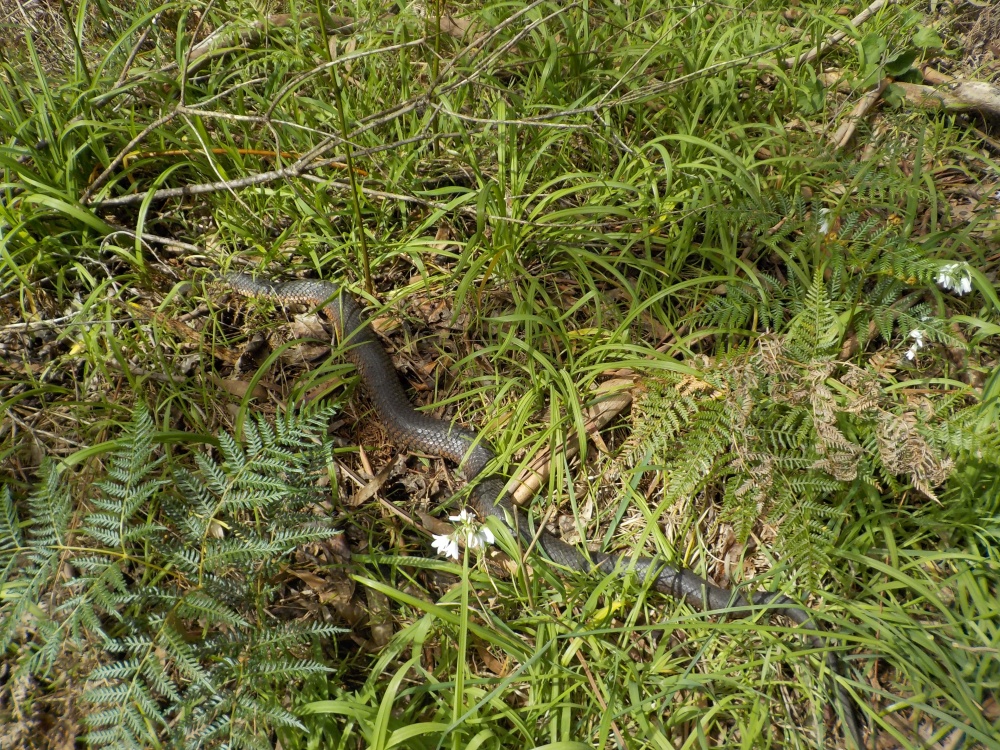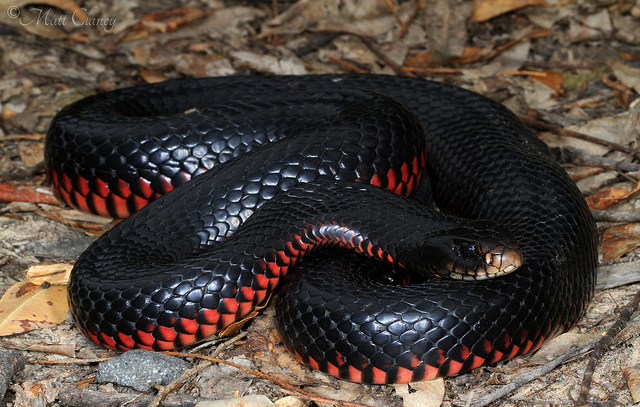The DU Lounge
Related: Culture Forums, Support ForumsA question for all the DU herpetologists
And I'm sure there are dozens of you....
Aussie snakes are just waking of after winter brumation (extreme slowing down of metabolism) and are starting to appear on walking tracks.
I saw what looked like a red-bellied black snake the other day but it's colour looked pale and faded. It was definitely alive but not moving and I suspect it had literally come to life within a few hours of sighting. My question is: do snakes fade in colour when they 'hibernate' in winter and darken up again when they go about their snakey business?
I know there is a lot colour variation, even within breeds but would love to find an answer to my question.
The snake I saw.

What normal, mature red-bellied blacks look like

HappyH
(149 posts)Give him a few days and he will be bright and shiny again.
canetoad
(19,876 posts)That makes sense and I really appreciate the answer. He was around 1.5m long, so hoping the dog and I don't run into him again. They are not crazy aggressive snakes but a bite is nasty.
HappyH
(149 posts)Typically, they come out of the cold weather slumber ready to shed. You can tell if you can see the eyes, the skin sheds there as well so the eyes will look dull or hazed over. Once they shed, they look for food. After they eat they usually are a lot calmer, not nearly as aggressive.
My wife is kinda the same, the girl wakes up hangry. Lot easier to deal with after she’s fed.
canetoad
(19,876 posts)The head is hidden behind a tuft of grass towards the left. I need to go back and look for the skin now, snake was gone a few hours later but I know where to look. ![]()
Bernardo de La Paz
(60,320 posts)canetoad
(19,876 posts)Around 1.5m and thicker than my arm in the middle. Found a juvenile coupla years ago on the steps down to the beach of all places. Only about 6 - 8 inches long but coloured like the second picture. I rehomed it in the dunes because they're protected. They seem to enjoy the beach. ![]()
surfered
(10,441 posts)Don’t take any chances!

3 Red-bellied black snake
red-bellied black snake face
Source: public domain
Maximum length: 254cm.
A semi-aquatic snake found in ponds, marshes, swamps and even manmade swimming pools. The red-bellied black snake (Pseudechis porphyriacus) is found all over the east coast, appearing in New South Wales, Queensland, Victoria, and a small portion of South Australia. This might be the single most commonly encountered snake by ordinary Australian people.
This species also has a less welcome record, as according to a survey from 2005 to 2015, the red-bellied black snake was responsible for 16% of Australian snakebites. Red-bellied black snake venom has strong anticoagulant properties, causing spontaneous bleeding. It contains the unique pseudexin, comprising 25% of the venom, and a neurotoxin called a-elapitoxin Ppr1.
Red-belly bites are also agonisingly painful, causing swelling, rotting flesh and redness. One of the freakiest symptoms is red-brown urine, due to myoglobin being released from assaulted muscle tissue.
Red-bellied black snakes are a highly adventurous species, as females can travel over 1km in 24 hours. They’re always investigating burrows for prey, or going on adventures into ponds to search for fish. Consequently, this snake is often encountered by ordinary east coast Australians, and that’s why it bites so many people.
Thankfully, this species rarely kills anyone, as the venom’s LD50 score is a comparatively weak 2.45mg. You also have a good chance of winning the snake roulette with this species, as only 70% of bites resulted in systemic envenomation in one study.
canetoad
(19,876 posts)Back in the 80s at my sister's house in Queensland. Through one kitchen window came a green tree snake. It had a look around, slithered on top of the benches right round to another window and let itself out. They're cute and harmless and not very big.